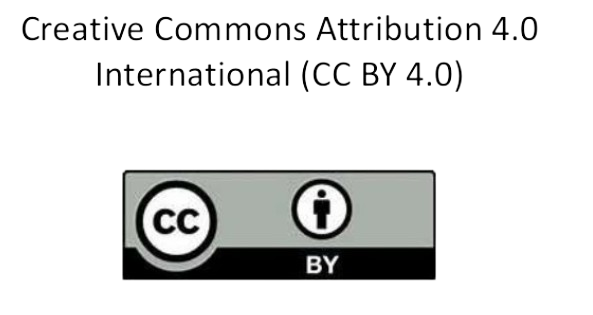Penerapan Gamifikasi berbasis Web untuk Meningkatkan Motivasi Belajar Sejarah Islam pada Siswa Kelas 4 SDN 2 Jetis Situbondo
DOI:
https://doi.org/10.35719/jptpd.v1i1.6Keywords:
Gamifikasi, Gamifikasi Berbasis Web, Motivasi Belajar, Sejarah Islam, SDN 2 Jetis SitubondoAbstract
Penelitian ini bertujuan untuk meningkatkan motivasi belajar siswa kelas 4 SD Negeri 2 Jetis Situbondo dalam mata pelajaran Sejarah Islam melalui penerapan gamifikasi berbasis web. Metode penelitian yang digunakan adalah Penelitian Tindakan Kelas (PTK) dengan model Kemmis dan McTaggart, yang terdiri dari tiga siklus. Setiap siklus terdiri dari tahap perencanaan, pelaksanaan, observasi, dan refleksi. Hasil penelitian menunjukkan bahwa penerapan gamifikasi berbasis web efektif dalam meningkatkan motivasi belajar dan pemahaman siswa terhadap materi Sejarah Islam. Persentase ketuntasan belajar siswa meningkat dari 69,2% pada Siklus 1 menjadi 92,3% pada Siklus 3. Penerapan gamifikasi berbasis web menciptakan suasana belajar yang lebih menarik dan interaktif, serta meningkatkan partisipasi aktif siswa dalam pembelajaran. Penelitian ini menyarankan agar gamifikasi diterapkan pada mata pelajaran lain di jenjang pendidikan dasar.
This study aims to enhance the learning motivation of 4th grade students at SD Negeri 2 Jetis in Islamic History subjects through the implementation of web-based gamification methods. The research method used is Classroom Action Research (CAR) with the Kemmis and McTaggart model, consisting of three cycles. Each cycle involves planning, implementation, observation, and reflection stages. The results showed that the application of web-based gamification methods was effective in improving students' learning motivation and understanding of Islamic History materials. The percentage of student learning mastery increased from 69.2% in Cycle 1 to 92.3% in Cycle 3. The use of web-based gamification created a more engaging and interactive learning environment, significantly increasing students' active participation in learning. This research suggests that the gamification method can be applied to other subjects at the elementary education level to enhance the quality of learning.
References
Bandura, A. (1986). Social foundations of thought and action: A social cognitive theory. Prentice-Hall.
Creswell, J. W. (2014). Research design: Qualitative, quantitative, and mixed methods approaches (4th ed.). SAGE Publications.
Deterding, S., Dixon, D., Khaled, R., & Nacke, L. (2011). From game design elements to gamefulness: Defining "gamification." In Proceedings of the 15th International Academic MindTrek Conference: Envisioning Future Media Environments (pp. 9-15). ACM.
Fitriana, R. (2022). Tantangan akses teknologi dalam pembelajaran daring: Sebuah refleksi dari siswa di daerah pedesaan. Jurnal Pendidikan Indonesia, 3(2), 232-241.
Hamari, J., Koivisto, J., & Sarsa, H. (2014). Does gamification work?—A literature review of empirical studies on gamification. In 2014 47th Hawaii International Conference on System Sciences (pp. 3025-3034). IEEE.
Hasanah, N. (2019). Penggunaan metode ceramah dalam pembelajaran sejarah Islam: Sebuah evaluasi kritis. Jurnal Pendidikan Agama Islam, 7(2), 105-117.
Kemmis, S., & McTaggart, R. (1988). The action research planner (3rd ed.). Deakin University Press.
Moleong, L. J. (2013). Metodologi penelitian kualitatif (Revisi ed.). PT Remaja Rosdakarya.
Nasution, N. E. A., Yasin, R., & Rizka, C. (2024). Development of An RPG Maker Mv-Based Interactive Game as Learning Media on Virus Materials for Grade X Students at Nurul Islam Jember Senior High School. Jurnal Pendidikan Matematika dan IPA, 15(3), 457-475. http://dx.doi.org/10.26418/jpmipa.v15i3.74029
Piaget, J. (1954). The construction of reality in the child. Basic Books.
Ryan, R. M., & Deci, E. L. (2000). Self-determination theory and the facilitation of intrinsic motivation, social development, and well-being. American Psychologist, 55(1), 68-78.
Slavin, R. E. (2006). Educational psychology: Theory and practice (8th ed.). Pearson.
Suryani, L. (2020). Pengaruh gamifikasi dalam pembelajaran daring terhadap motivasi belajar siswa. Jurnal Teknologi Pendidikan Indonesia, 12(1), 78-89.
Wahab, A. (2017). Pendidikan sejarah Islam: Relevansi dan tantangan di abad modern. Jurnal Sejarah dan Kebudayaan Islam, 5(1), 40-54.
Downloads
Published
How to Cite
Issue
Section
License
Copyright (c) 2024 JOURNAL OF PEDAGOCICAL AND TEACHER PROFESSIONAL DEVELOPMENT

This work is licensed under a Creative Commons Attribution 4.0 International License.











